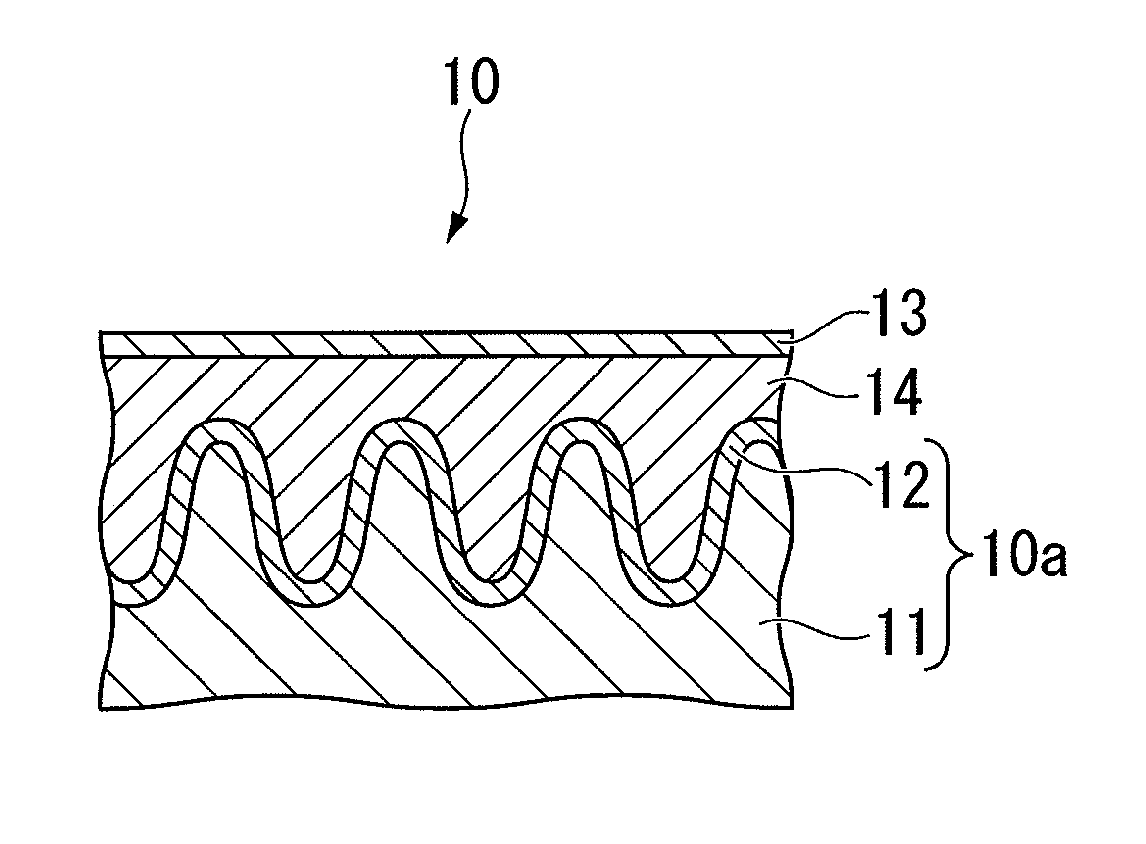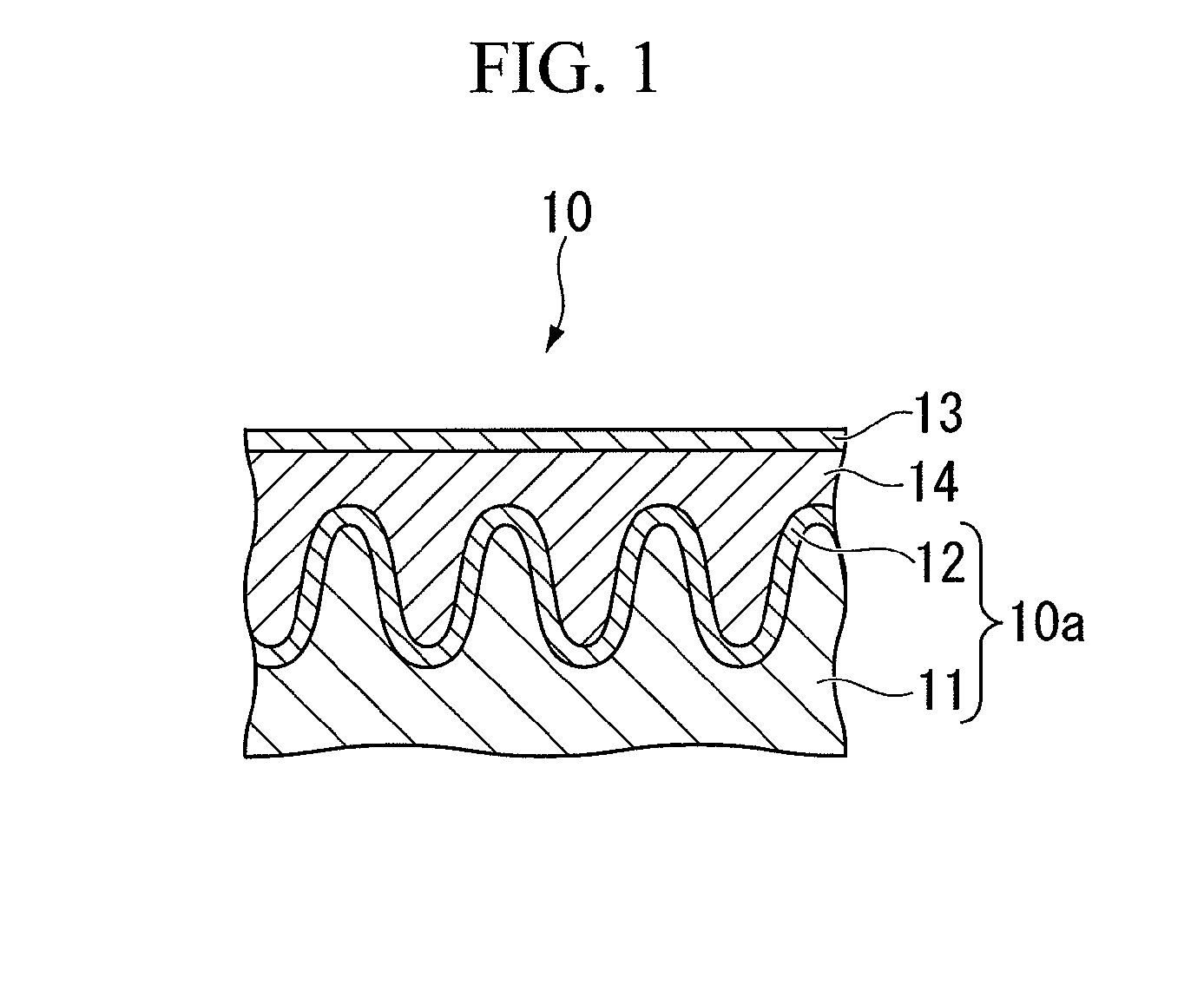Capacitor manufacturing method
a manufacturing method and capacitor technology, applied in the manufacture of electrolytic capacitors, capacitor details, coatings, etc., can solve the problems of low productivity, deterioration of capacitor productivity, and affecting the performance of capacitors,
- Summary
- Abstract
- Description
- Claims
- Application Information
AI Technical Summary
Benefits of technology
Problems solved by technology
Method used
Image
Examples
first embodiment
Next is a description of the capacitor manufacturing method according to the present invention.
The capacitor manufacturing method of this embodiment has a step of preparing a capacitor substrate 10a by oxidizing the surface of the anode 11 to form the dielectric layer 12, a step of forming the solid electrolyte layer 14 on the surface of the dielectric layer 12 of the capacitor substrate 10a, and a step of forming the cathode 13 on the surface of the solid electrolyte layer 14.
In the step of preparing the capacitor substrate 10a, an example of the method used for electrolytically oxidizing the surface of the anode 11 is a method in which the surface of the anode 11 is oxidized within an electrolyte such as an aqueous solution of ammonium adipate by applying a voltage.
In the step of forming the solid electrolyte layer 14, a film-formation treatment that involves applying a conductive polymer solution to the dielectric layer 12 of the capacitor substrate 10a, and then drying the solut...
example 1
A capacitor substrate prepared in (4) above was subjected to 5 repetitions of the steps of dipping the substrate in the conductive polymer solution (I), gradually pulling the substrate up out of the solution, and then drying the substrate for 10 minutes using a 150° C. hot-air dryer, thereby forming a conductive polymer film (1) on the surface of the dielectric layer of the capacitor substrate (the first film formation).
Subsequently, the capacitor substrate with the conductive polymer film (1) formed thereon was subjected to two repetitions of the steps of dipping the capacitor substrate in the conductive polymer solution (V), gradually pulling the substrate up out of the solution, and then drying the substrate for 60 minutes using a 150° C. hot-air dryer, thereby forming a conductive polymer film (2) on the outside of the conductive polymer film (1) (the second film formation).
Following subsequent formation of a carbon film and a silver film on the outside of the conductive polymer...
example 2
With the exception of changing the conductive polymer solution (I) used in the first film formation in example 1 to the conductive polymer solution (II), a capacitor was prepared and evaluated in the same manner as that described for example 1. The results of the evaluations are shown in Table 1.
PUM
 Login to View More
Login to View More Abstract
Description
Claims
Application Information
 Login to View More
Login to View More - R&D
- Intellectual Property
- Life Sciences
- Materials
- Tech Scout
- Unparalleled Data Quality
- Higher Quality Content
- 60% Fewer Hallucinations
Browse by: Latest US Patents, China's latest patents, Technical Efficacy Thesaurus, Application Domain, Technology Topic, Popular Technical Reports.
© 2025 PatSnap. All rights reserved.Legal|Privacy policy|Modern Slavery Act Transparency Statement|Sitemap|About US| Contact US: help@patsnap.com


